While most of us understand that a Non-Profit Organization cannot be “run like a business,” there are several lessons we can learn by applying the Jobs-to-be-Done lens to performance and results. The late Peter Drucker asked us: What is the Bottom Line when there is no “Bottom Line”? His point is well made: In a business, there is … Continue Reading
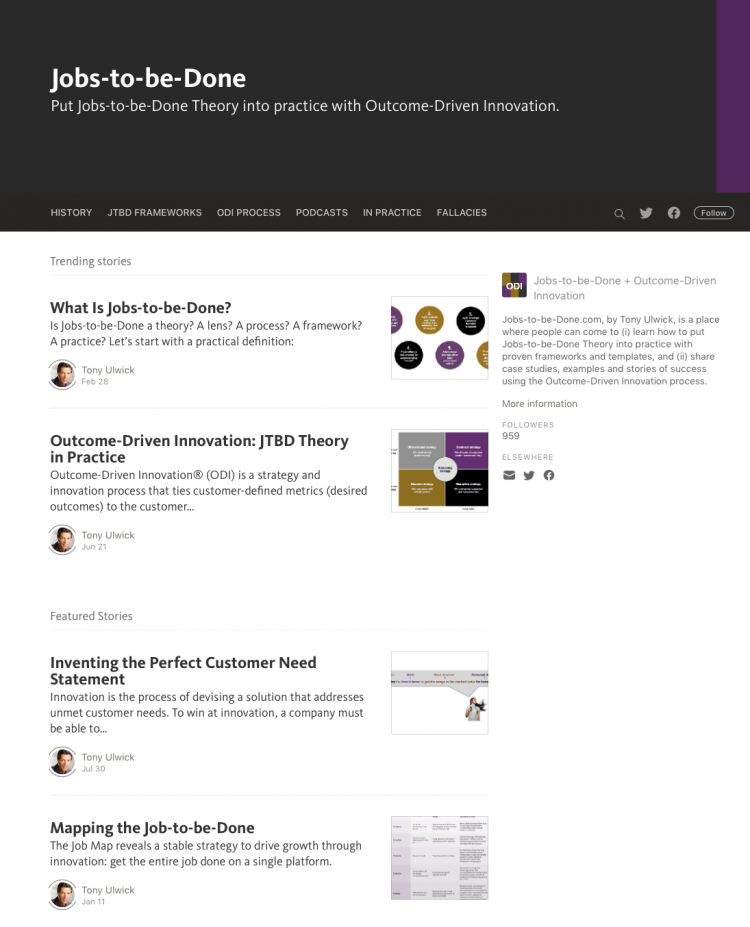
Jobs-to-be-Done.com: A Practical Resource
A resource for Jobs-to-be-Done practitioners, jobs-to-be-done.com is a place where people can come to (i) learn how to put Jobs-to-be-Done Theory into practice with proven frameworks and templates, and (ii) share case studies, examples and stories of success using the Outcome-Driven Innovation (ODI) process. The site covers the following Jobs-to-be-Done categories: history, frameworks, the ODI process, … Continue Reading
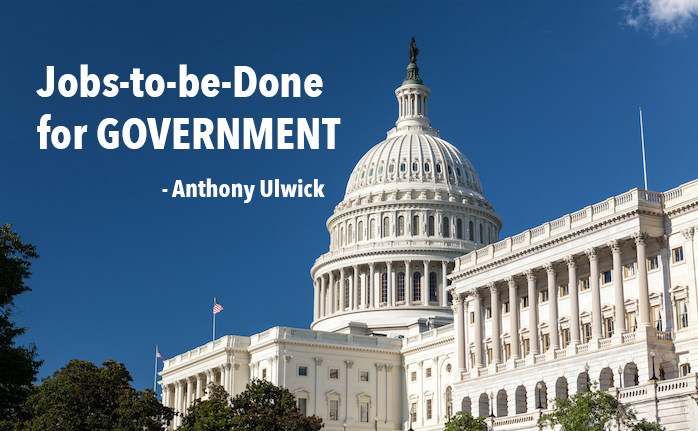
Jobs-to-be-Done for Government
One of the questions we get at Strategyn involves the application of Jobs-to-be-Done Theory to Government. Can JTBD be used to help government agencies do a better job? We’ve used JTBD with government agencies to help them better understand their service levels, their delivery models, and how to get closer to the customer – you, … Continue Reading
Jobs Theory: Understanding Financial Desired Outcomes
As part of our Jobs-to-be Done Needs Framework, we know that when buying a product or service, the buyer (purchase decision maker) uses a set of financial metrics to decide whether or not to buy product A or product B, or to buy from supplier A or supplier B. An understanding of the buyer’s financial … Continue Reading
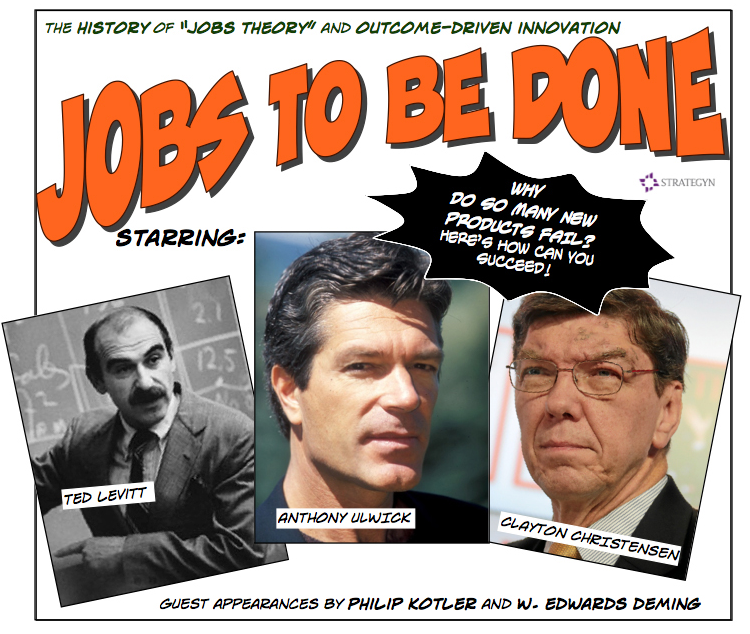
The Cartoon History of Jobs-to-be-Done
The folks at JTBDinstitute have created a cartoon history of Jobs to be Done that illustrates the journey – step by step – of how far we have come. In particular, they highlight three critical tools developed and used by Strategyn over the years: The three tools are: the Opportunity Landscape the Jobs-to-be-Done Needs Framework the Jobs-to-be-Done … Continue Reading
The Key to Innovation Success
By focusing on the core functional job the customer is trying to execute and studying it as you would study a process, it becomes possible to uncover the metrics that customers use to measure success and value as they execute each step in that job. These metrics are included in specially formed need statements we … Continue Reading

Keynote: ISPIM, Toronto 2017 (March 19-22)
I’ll be the keynote speaker for the ISPIM conference in Toronto this year in March (19-22): I will be sharing my latest insights on Jobs-to-be-Done and Outcome-Drive Innovation. Join me and the others if you can. Learn more about JTBD >> JOBS TO BE DONE: Theory to Practice by Anthony Ulwick IDEA BITE PRESS October 25, 2016
3 Unique Characteristics of a Functional Job-to-be-Done
When defined correctly, a functional Job-to-be-Done has three unique and extremely valuable characteristics: First, a job is stable; it doesn’t change over time. It’s the delivery vehicle or the technology that changes. Take the music industry, for example. Over the years people have used many products to help them “listen to music” (the Job-to-be-Done). This … Continue Reading
Defining Customer Needs: The Root of the Problem
Despite the available needs-gathering methods, companies nearly always fail to uncover all or even most of the customer’s needs. How is this possible? While nearly every manager agrees that the goal of innovation is to devise solutions that address unmet customer needs, a common language for communicating a need does not exist. In research we … Continue Reading
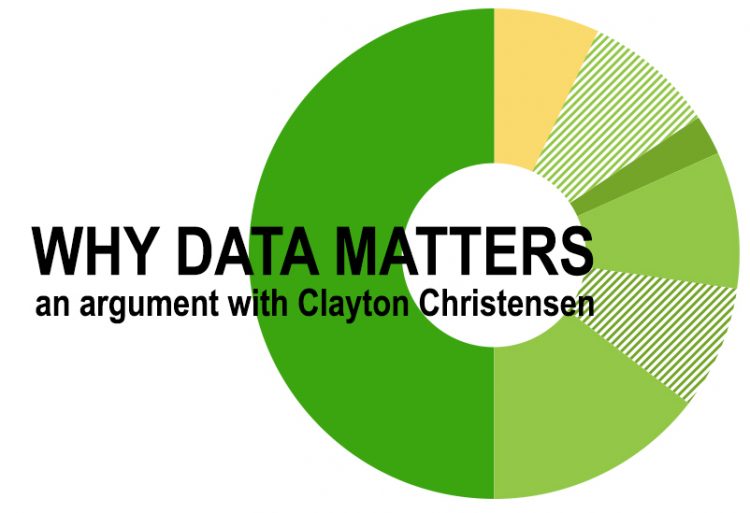
Why Data Matters: An Argument with Clayton Christensen
As Jobs Theory picks up steam in the marketplace of JTBD ideas, there’s an argument being made that data doesn’t matter. Clay’s article in Management Today says explicitly that the spreadsheet is the enemy of innovation. And, at a recent conference in Vienna, Professor Clayton Christensen made a statement that went along these lines: There are no data in … Continue Reading
The Strategic Function of the Jobs-to-be-Done Needs Framework
As I have mentioned elsewhere, the Jobs-to-be-Done Needs Framework introduces the types of customer needs that must be considered to gain a deep understanding of what a customer is trying to accomplish. They include (i) the core functional Job-to-be-Done, (ii) the desired outcomes tied to the core functional Job-to-be-Done, (iii) related jobs, (iv) emotional and social jobs, … Continue Reading

The Birth of Jobs to be Done Theory (Spring 2000)
Here’s a glimpse of when I introduced professor Clay Christensen to ODI and Jobs-to-be-Done Theory before it was called Jobs-to-be-Done. In the weeks leading up to the “Solving the Innovator’s Dilemma” event, I had met with Clay a number of times. I had the opportunity to show him our Outcome-Driven Innovation process and several examples of its … Continue Reading
What is an Effective Innovation Process?
An effective innovation process must produce answers to the following questions: Who is the customer? What job is the customer trying to get done? What are the customer’s desired outcomes? Do segments of customers exist that have different unmet outcomes? What unmet outcomes exist in each segment? How well do competing products address the unmet … Continue Reading
Why Ideas Don’t Solve Problems
The goal of innovation is straightforward: to come up with solutions that address unmet customer needs. Today’s most popular approaches to innovation fall into one of two types: those that begin with a focus on solutions (or ideas) and those that begin with a focus on customer needs. In what I call the “ideas-first” approach, … Continue Reading
3 Reasons Why Idea-Driven Innovation Fails
Despite its popularity, academic support, and widespread use, the ideas-first approach to innovation cannot be counted on for predictable growth and is inherently doomed to failure. There are three reasons for this: First, generating more ideas does not meaningfully improve the probability that someone will come up with the optimal idea to satisfy unmet customer … Continue Reading
Why do Innovation Projects Fail?
In order to accurately determine the success rate for traditional innovation processes we can examine reports from 12 different sources, including the Harvard Business Review, the consulting firm Frost & Sullivan, the professional services firm PricewaterhouseCoopers, the Product Development Management Association (PDMA), the Corporate Strategy Board and others. Frost & Sullivan reported (i) that only one … Continue Reading
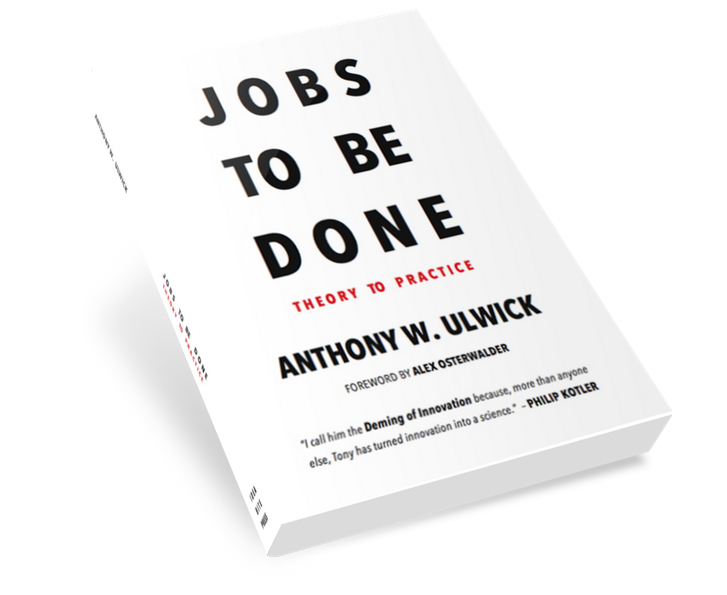
“Jobs to be Done: Theory to Practice” by Anthony Ulwick
“What is the value of Jobs-to-be-Done Theory and how do you put the theory into practice?” That’s a question we’ve been hearing for 25 years. Introducing: JOBS TO BE DONE: Theory to Practice (IDEA BITE PRESS, October 25, 2016). Why do so many innovation projects fail? What are the root causes of failure? How can they be … Continue Reading